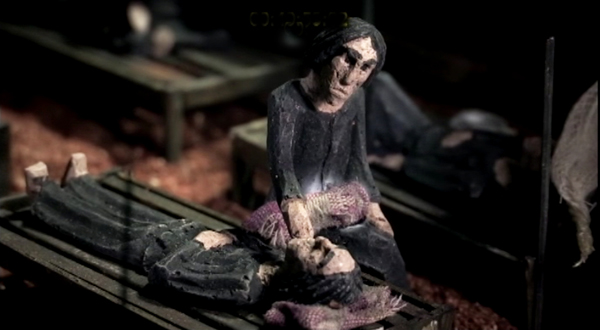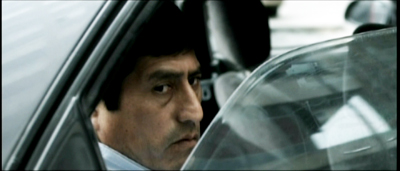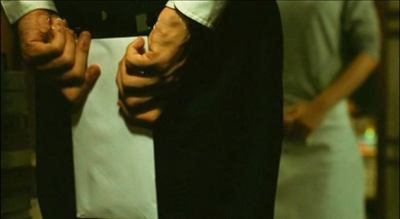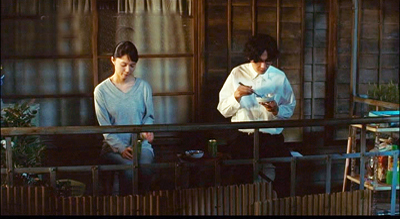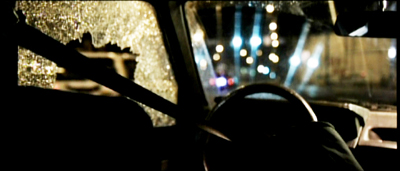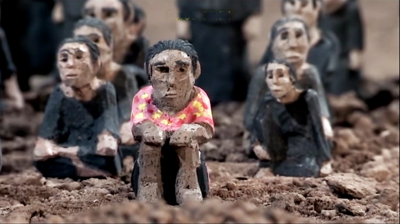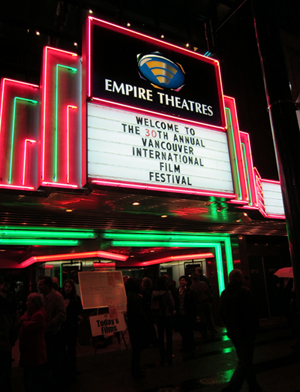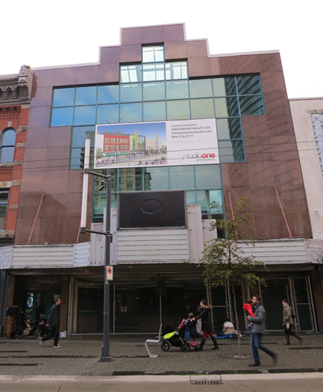VIFF extremes
Tuesday | October 1, 2013 open printable version
open printable version
The Missing Picture (2013).
DB here:
The Vancouver International Film Festival, known to all as VIFF, has been undergoing some big changes. It lost its primary venue, an ageing but cozy multiplex surrounded by pubs, creperies, music clubs, and other marks of downtown culture. Alas, the Empire Granville 7 is now shuttered, to be renovated as a retail space. VIFF must spread its bounty more widely.
As before, films are shown at the Cinematheque and the Vancity media center. The new venues include the Vancouver Playhouse, the Rio Theatre, three screens at the Cineplex Odeon International Village, the Vancouver Centre for the Performing Arts, and the Goldcorp Centre for the Arts at Simon Frazer University. All the ones we’ve visited have been excellent screening spaces.
Everything we’ve seen has been on some form of video—excuse me, “digital cinema.” Apart from the occasional 35mm or HDCam show, DCP projection, after a couple of years of teething pains, is the norm. Not that this guarantees uniformity. Albert Serra’s Story of My Death, a peculiar portrait of the elderly Casanova, still looked (probably intentionally) like it was shot on VHS. The furor about festivals’ conversion to digital formats, discussed in this 2012 blog entry and extended in my little e-book, belongs firmly to history. Henceforth film festivals will be file festivals.
Genres plain and fancy
El Mudo.
As usual at VIFF, the range is wide. At one end of the scale is a feel-good dramedy like The Great Passage, Japan’s Academy Award entry. The central character is Majime, a shy and unworldly young linguist who is drafted to help create a dictionary of Japanese as a living language. An otaku when it comes to words, he soon devotes his life to fulfilling the mission. Over the years he manages to find a girlfriend and earn the respect of the elders steering the project and the friendship of a ne’er-do-well colleague who prefers alcohol to etymologies. The dweeb Majime, despite his sweater-vests and sleeve protectors, becomes moderately sociable, while his pal acknowledges that his own commitment to a geeky endeavor shows he’s not as cool as he thought.
The English title is misleading; a better one might be Crossing the Sea of Language, since the central metaphor is that of charting the ebb and flow of usage. The process is dramatized by setting the start of the project in 1995, before Internet 2.0. The professor overseeing the project points out that the arrival of the Web speeds up language change. The Net works its way into the plot, as card-based research gets replaced by algorithms and word searches. A lot of the film’s humor arises when sequestered scholars, like those in Ball of Fire, have to figure out what this younger generation means when it calls something bad (i.e., good).
Ishii Yuya, who brought to VIFF Sawako Decides (2010) and Mitsuko Delivers (2011), tells his heart-warming story in a trim, efficient manner. His composure could teach our Hollywood directors a thing or two. I didn’t see a wasted shot or gratuitous camera movement, and you might miss Ishii’s virtuoso handling of a crowded office space as volunteers pack in to beat the deadline.
You can often spot a director’s skill in delicate touches. Here, I admired a gentle hook between two scenes. Majime has written a florid, anachronistic letter to Kaguya declaring his fondness for her. At the end of one scene he walks away from the camera clutching the note, which the framing centers on. Cut to a distant shot of him with Kaguya, the letter a small detail alongside his left leg.
Most viewers, I’m convinced, scan to find the letter and then wait with an amused tension for Majime to awkwardly offer it. It’s a good example of gradation of emphasis: No need for a close-up at the start of the second scene. This sort of unforced, easygoing presentation of a plot with a serious point—the quiet heroism of committing yourself to something of value to your community—makes The Great Passage as much worth exporting to North America as Departures and Shall We Dance? have proved in years past.
A more offbeat genre film is El Mudo, a Peruvian quasi-thriller, quasi-comedy from Daniel Vega and Diego Vega. After a day of dreary complaints and insults, the magistrate Constantino finds his car window smashed. What else is new? Soon after, he’s driving through traffic and is apparently wounded by a sniper. He loses his voice but becomes doggedly determined to uncover what he thinks is a conspiracy.
Constantino is not your raging rogue investigator. His muteness only increases a fixed, slightly scowling demeanor that suggests stoicism, boredom, or emotional vacuity. He refuses to perform the exercises that might strengthen his voice, as if he welcomes the loss of one more channel of expression. Everyone else seems normal, but Constantino (played superbly by Fernando Bacilio) might have walked out of an Aki Kaurismaki movie. The filming is in tune with the protagonist–static and prolonged shots, shrewd but unemphatic angles that simply wait for something to happen.
The result is an anti-action film. The assassination attempt, if that’s indeed what it is, is merely a bump in what is otherwise a drab long take filmed from the back seat of Constantino’s car. After waiting for a traffic light to change, he proceeds and suddenly slumps sideways as we hear four faint cracking sounds and watch the car drift onto the curb.
When the case is solved (perhaps) during a police raid, poor Constantino waits outside and so merely glimpses the stunt that would get visceral treatment in another movie. By the end, he finally smiles with pleasure, revealing himself as at a memory of maternal affection; he’s a mama’s boy after all. Il Mudo is a continuous pleasure throughout and is to be recommended to any fan of deadpan grotesque.
Many missing images
We’ve suggested, in both Film Art and elsewhere on this site, that a documentary film can be highly artificial. As long as it purports to make claims about the nonfictional world, the film can stage scenes and even use animation to support its points. A new test of this idea has come along in the form of Rithy Panh’s muted but powerful memoir of Khmer Rouge atrocities, The Missing Picture.
It employs some documentary conventions, like newsreel footage and voice-over commentary, but it seeks to present what was never put on film at the time. Panh’s family is shipped out of Phnom Penh, sent to forced labor and starvation in the countryside. Medical experiments are conducted with humans. Children are forced to pound out fertilizer and haul bodies to burial pits. The Party cadres, of course, eat well. Western intellectuals may have praised the Khmer Rouge as disciplined Communist idealists, but “the revolution they promised exists only on film.” How do you show what was never shown, not even widely known?
To provide a counter-film, Panh fills tabletop tableaus with carved clay figures. By the hundreds, these little effigies populate toy settings of work camps, hospitals that are merely storehouses for the dying, and landscapes that call forth children’s fantasies of escape and memories of happy family life. The figures themselves, squat and chunky, wear emblematic clothes–most often, gray work pajamas–and bear hollow-eyed expressions hinting at sullen fear or merely numbness. Panh’s childhood self is clothed, against all orders, in a pink shirt with yellow dots, which not only lets us identify him but suggests his yearning for the world of color that the Khmer stamped out.
As The Missing Picture proceeds, it becomes more reflexive. The Khmer officials show their propaganda films to the camp audiences, and Panh takes the opportunity to show his figures gathered and obediently watching. At the end, he reminds us that those who resisted are still wandering among us, like ghosts. Some things, he grants, should not be seen or known. “But should any of us see or know them, then he must live to tell of them.”
VIFF may be living in many new houses, but it’s definitely living, and as splendidly as ever.
The Empire Granville 7 was the last remaining movie house on Vancouver’s Theatre Row, which at one time had over twenty theatres. On the Granville 7’s future as retail space, a story is here. This article mentions that the Granville 7 originally absorbed a theatre called the Coronet. Cinema Treasures supplies more details of Granville 7 history. Images of the interior demolition of the house are here.












